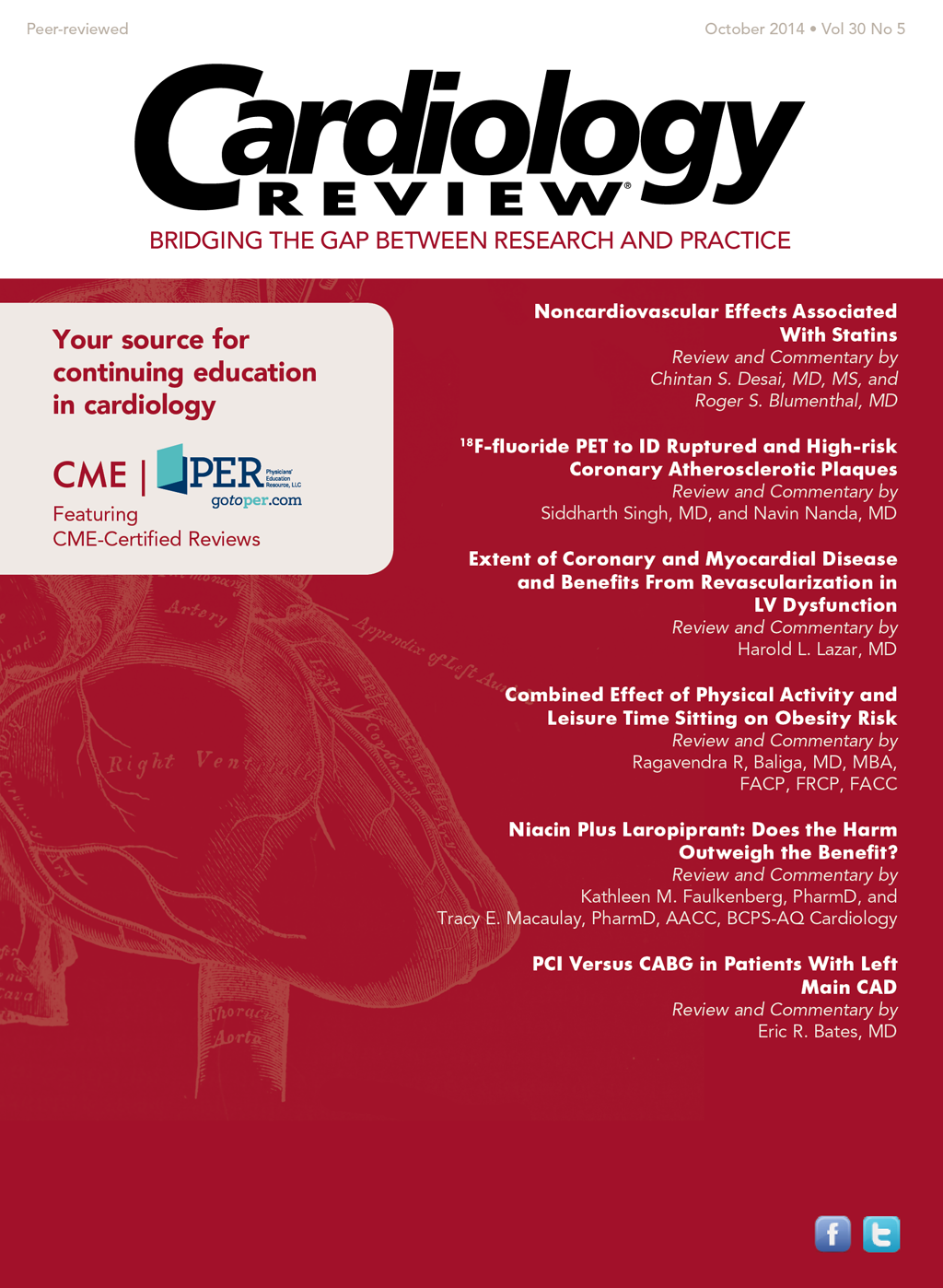Publication
Article
Cardiology Review® Online
Combined Effect of Physical Activity and Leisure Time Sitting on Obesity Risk
What is the relationship between physical activity, leisure time, and a person's overall health.
Review
Diabetologia
Bell HA, Hamer M, Batty GD, Singh-Manoux A, Sabia S, Kivimaki M. Combined effect of physical activity and leisure time sitting on long-term risk of incident obesity and metabolic risk factor clustering [published online July 31, 2014]. . doi:10.1007/s00125-014-3323-8.
T
he aim of this study was to determine the combined effects of moderate-to-vigorous physical activity and leisure time sitting on the long-term risk of obesity and clustering of metabolic risk factors (particularly low high-density lipoprotein cholesterol [HDL-C], high triglycerides, hypertension, hyperglycemia, and insulin resistance). The study authors used responses to a questionnaire given to 3670 study participants from the Whitehall II occupational cohort study of British civil servants to assess duration of moderate and vigorous physical activity. They used multivariable logistic regression models to determine associations between physical activity and leisure time tertiles with odds of incident obesity (body mass index [BMI] ≥30 kg/m
2
) and incident metabolic risk factor clustering of 2 or more factors at 5- and 10-year follow-ups.
Study Details
The mean age of the cohort was 56 years; 73% were male. Incident obesity was associated with lack of physical activity but not with leisure time sitting. After 5 years, the lowest odds of incident obesity was in individuals reporting both high physical activity and low leisure time sitting (odds ratio [OR], 0.26; 95% CI, 0.11-0.64) with weaker effects after 10 years. After 5 years, lower odds of incident metabolic risk clustering was seen in those with intermediate levels of both physical activity and leisure time sitting compared with those with low physical activity and high leisure time sitting (OR, 0.53; 95% CI, 0.36-0.78), with similar odds after 10 years—a U-shaped pattern. The study investigators found no interaction between the amount of physical activity and incident metabolic risk factor clustering, The greatest risk reduction was observed in those with intermediate levels of physical activity and leisure time sitting, suggesting that moderate to vigorous physical activity and leisure time sitting may be sufficient to protect against developing metabolic risk clustering.
not
The authors concluded that to reduce the risk of obesity, both high levels of physical activity and low levels of leisure time may be required. The associations between developing metabolic risk factors was not entirely clear. In their discussion, the authors attributed the U-shaped pattern of their results to chance or to residual confounding due to factors such as baseline diabetes, obesity, quality of the diet, and medications that can affect metabolic factors. Excessive fat, sugar-sweetened beverages and foods, and excessive alcohol intake are important contributors to serum triglyceride concentrations and can result in clustering of metabolic risk factors. Another important confounding factor that could potentially affect metabolic risk factors is energy intake, particularly ingestion of a high-carbohydrate diet. Therefore, an individual spending more time sitting watching TV or playing video games and ingesting sugar-sweetened beverages (or high alcohol intake) is more likely to have elevated metabolic risk factors compared with another individual who is solely watching TV or playing video games and is snacking. An important limitation of this study, therefore, was the lack of data on caloric intake and diet quality.






